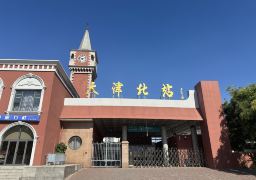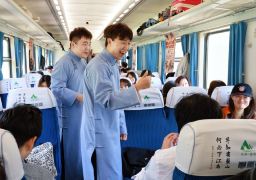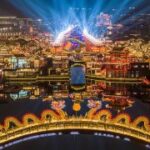Rapid Clapper, originally known as ‘Counting Treasures’, also called ‘Smooth Tongue’, ‘Flowing Mouth Rhyme’, or ‘Practicing the Mouth’, evolved from the ‘Lotus Fall’ performed by the poor during the Song Dynasty. Initially, it was a method and means used by beggars while begging on the streets, with a history that is quite ancient. After the liberation of New China, Tianjin’s Qu Yi Troupe performing artist Li Runjie made significant reforms to ‘Counting Treasures’. To elevate the artistic style and avoid the traditional ‘Counting Treasures’ aura of the martial world, he drew on the performance arts of sister arts such as bamboo clapper books and Xihe drums, innovating the tone, expression, and movements to enhance the artistic expressiveness in portraying characters and describing scenes.
Crosstalk, a form of folk rap and storytelling, is characterized by speaking, imitating, teasing, and singing. Originating in North China, it has become popular in the Beijing-Tianjin-Hebei region, spread throughout the country and overseas, and has been around since the Ming and Qing dynasties, flourishing in contemporary times. It is mainly performed orally, with main props including folding fans, handkerchiefs, and clappers. Performance forms include monologue, dialogue, and group crosstalk, making it a popular folk art rooted in life.

Sichuan Opera is one of the Han Chinese opera genres, popular in the eastern and central parts of Sichuan, Chongqing, and some areas of Guizhou and Yunnan. The Sichuan Opera facial makeup is an important part of the Sichuan Opera performance art, a treasure created and passed down by generations of Sichuan Opera artists.The face-changing in Sichuan Opera is one of the special skills of the performance. It is used to reveal the changes in the inner thoughts and emotions of the characters in the play. It turns invisible and intangible abstract emotions and psychological states into visible and tangible concrete images – facial makeup. The face-changing in Sichuan Opera is a special skill used in Sichuan Opera art to shape characters and is a romantic method to reveal the inner thoughts and emotions of the characters.










